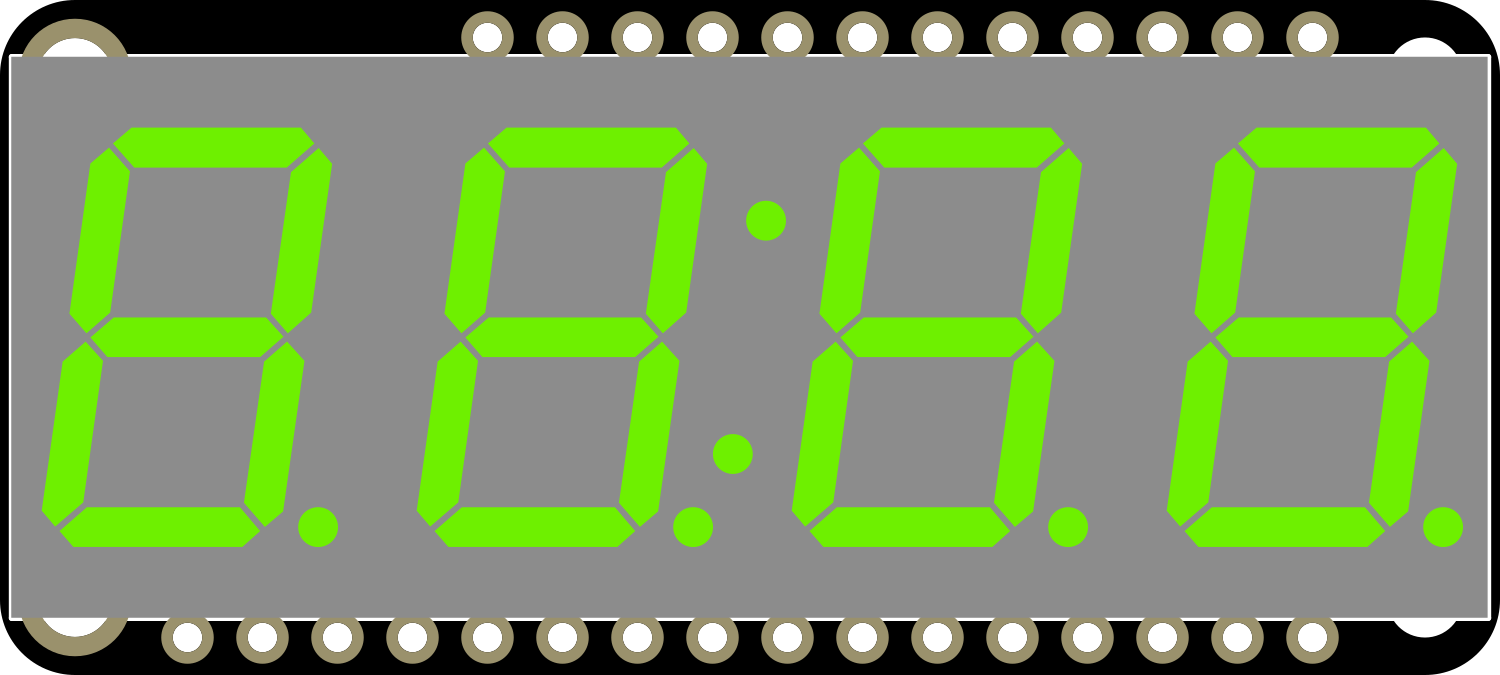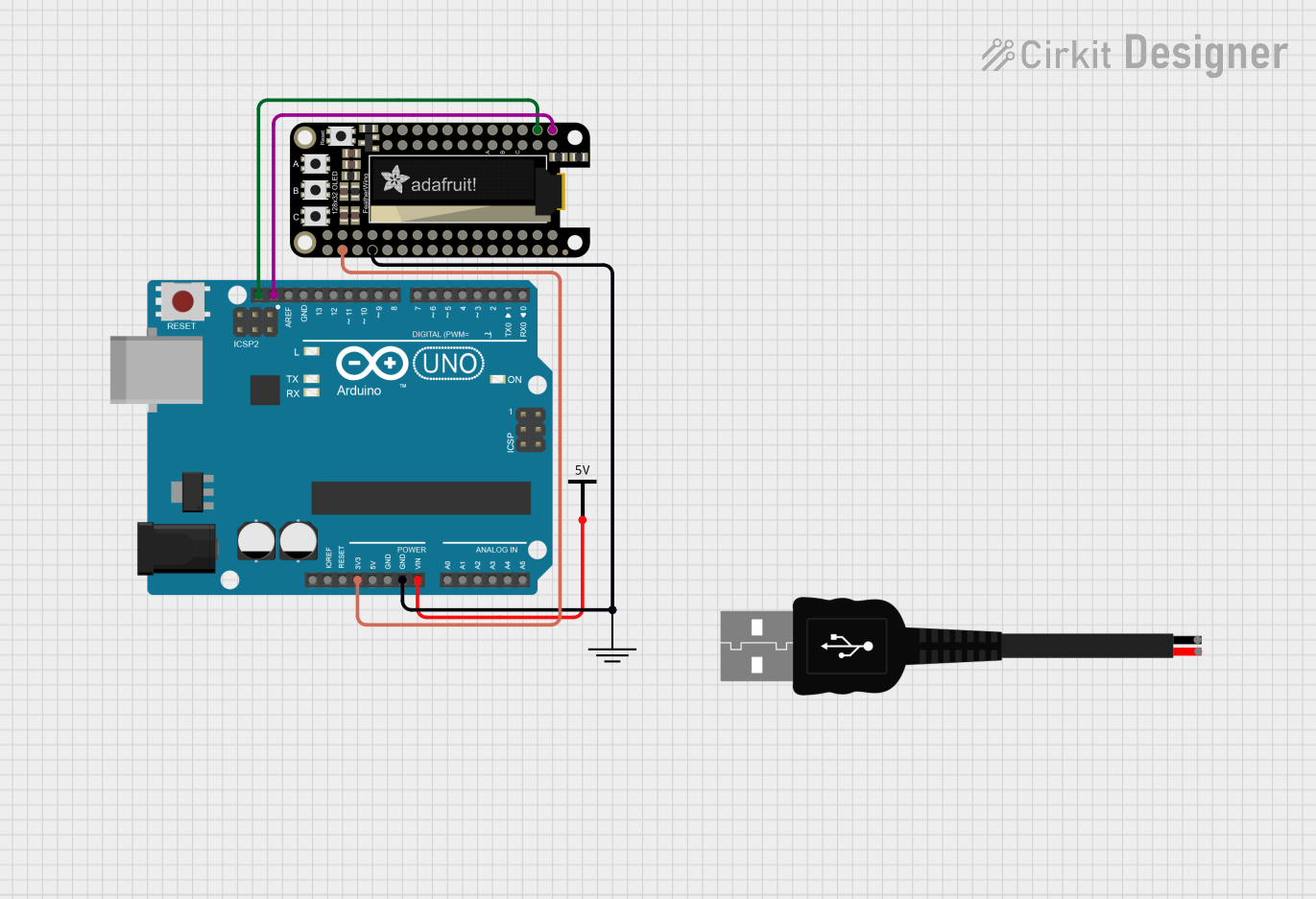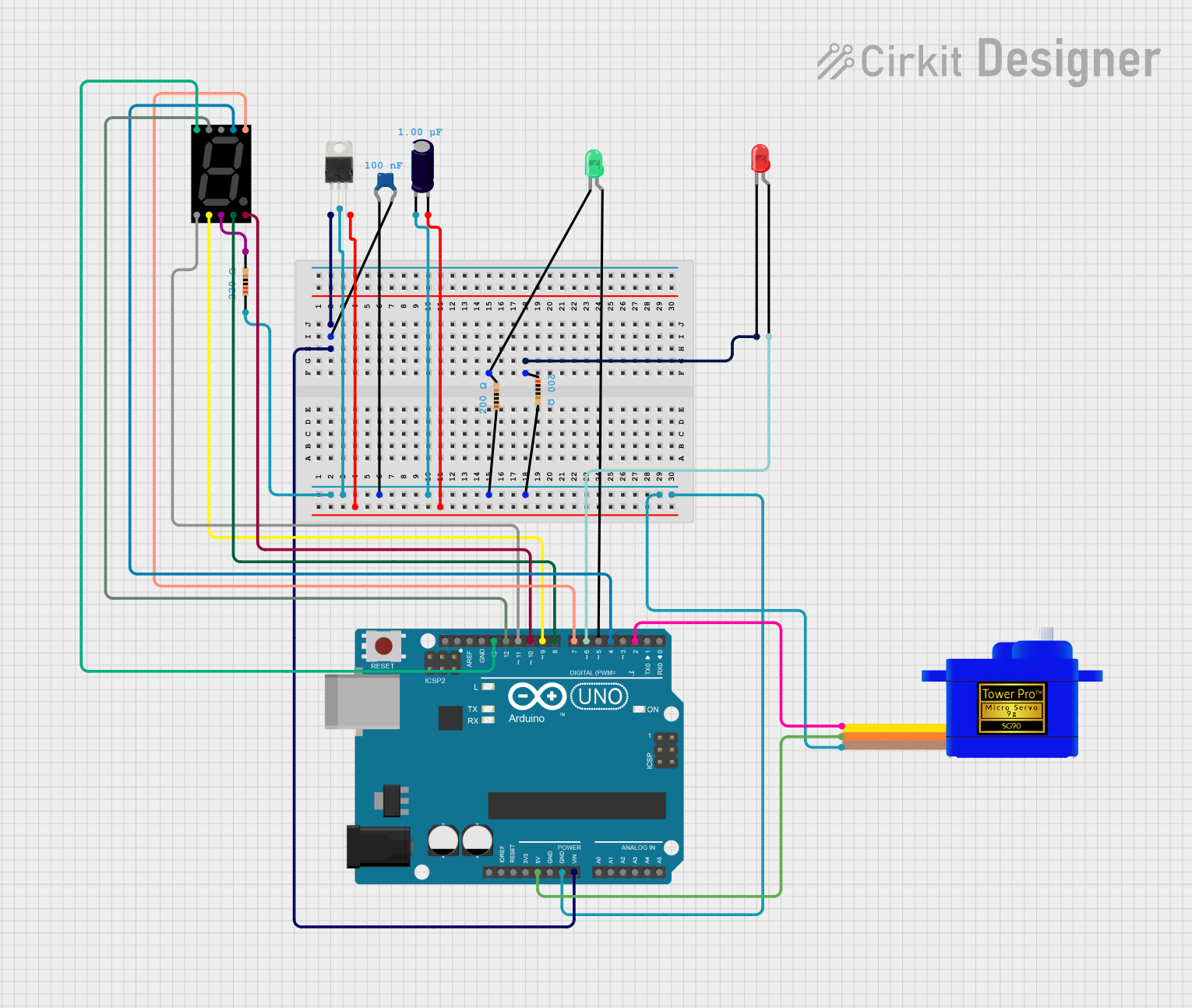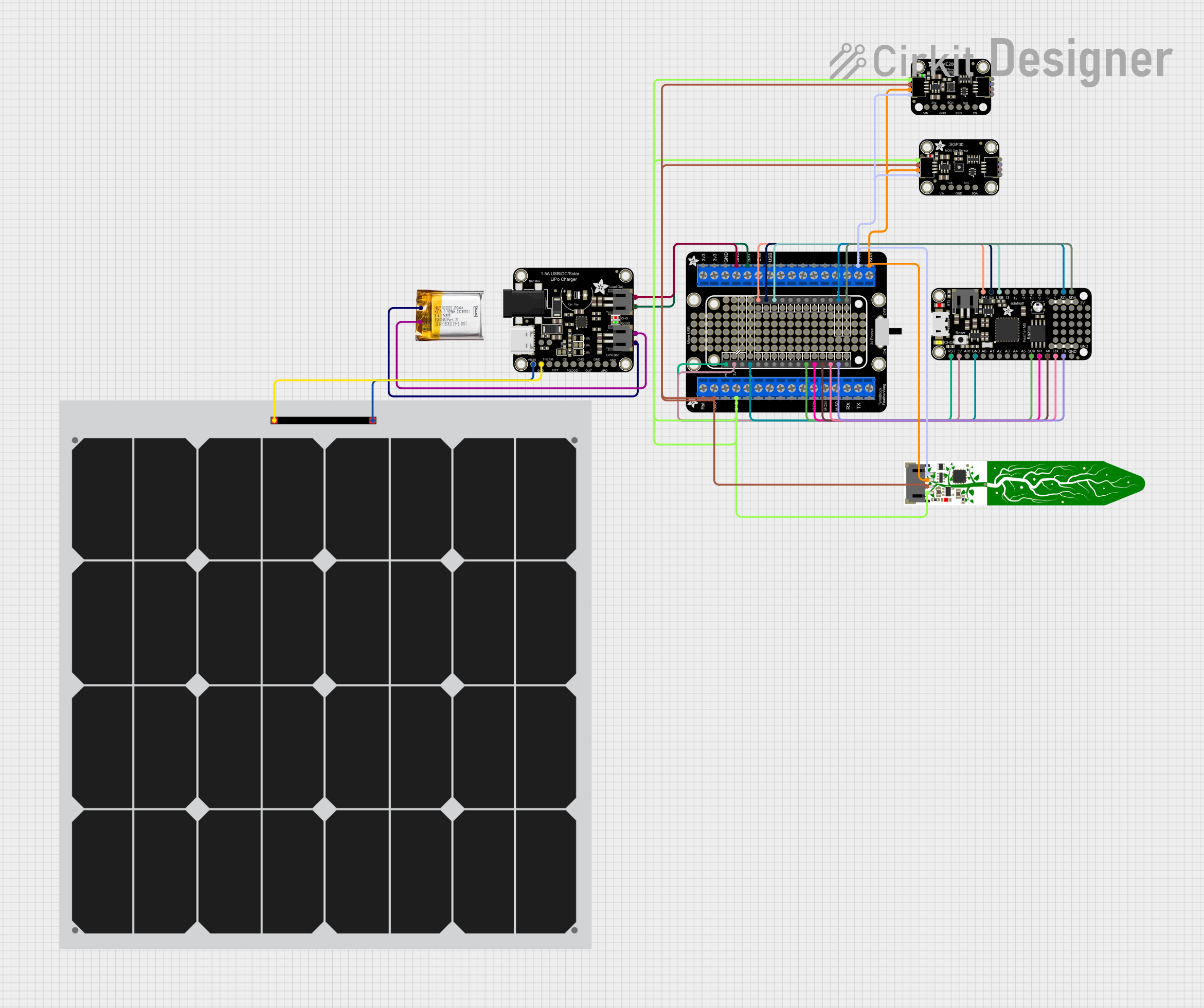
How to Use Adafruit 7 Segment FeatherWing - Green: Examples, Pinouts, and Specs

 Design with Adafruit 7 Segment FeatherWing - Green in Cirkit Designer
Design with Adafruit 7 Segment FeatherWing - Green in Cirkit DesignerIntroduction
The Adafruit 7 Segment FeatherWing - Green is a compact, easy-to-use display module designed for integration with the Adafruit Feather ecosystem. This module features a 4-digit, 7-segment LED display that allows users to present numerical data or simple alphanumeric characters in a clear and visible format. Common applications include clocks, timers, counters, and readouts for various sensors.
Explore Projects Built with Adafruit 7 Segment FeatherWing - Green

 Open Project in Cirkit Designer
Open Project in Cirkit Designer
 Open Project in Cirkit Designer
Open Project in Cirkit Designer
 Open Project in Cirkit Designer
Open Project in Cirkit Designer
 Open Project in Cirkit Designer
Open Project in Cirkit DesignerExplore Projects Built with Adafruit 7 Segment FeatherWing - Green

 Open Project in Cirkit Designer
Open Project in Cirkit Designer
 Open Project in Cirkit Designer
Open Project in Cirkit Designer
 Open Project in Cirkit Designer
Open Project in Cirkit Designer
 Open Project in Cirkit Designer
Open Project in Cirkit DesignerTechnical Specifications
Key Technical Details
- Display Type: 4-digit, 7-segment LED
- Color: Green
- Operating Voltage: 3.3V to 5V
- Communication: I2C interface
- I2C Addresses: 0x70 (default) - 0x77 (selectable with solder jumpers)
- Dimensions: 51mm x 23mm x 5mm / 2.0" x 0.9" x 0.2"
- Weight: 4.8 grams
Pin Configuration and Descriptions
| Pin | Description |
|---|---|
| GND | Ground connection |
| 3V | 3.3V power supply |
| SDA | I2C data line |
| SCL | I2C clock line |
| RST | Reset pin (optional use) |
Usage Instructions
Integration with a Feather Board
- Mounting: Align the headers of the 7 Segment FeatherWing with the corresponding sockets on your Feather board and solder them together.
- Powering Up: Once connected, power your Feather board as usual. The display should light up if the connections are correct.
- I2C Communication: The FeatherWing uses I2C for communication, which requires only two data lines (SDA and SCL). Ensure that these lines are connected properly to your Feather board.
Programming the Display
To control the 7 Segment FeatherWing, you will need to use the Adafruit LED Backpack library, which can be installed via the Arduino Library Manager.
#include <Wire.h>
#include <Adafruit_GFX.h>
#include "Adafruit_LEDBackpack.h"
Adafruit_7segment matrix = Adafruit_7segment();
void setup() {
matrix.begin(0x70); // Initialize the display with its I2C address
}
void loop() {
matrix.print(1234, DEC); // Display the number 1234
matrix.writeDisplay(); // Send the data to the display
delay(5000); // Wait for 5 seconds
}
Best Practices
- I2C Addressing: If you are using multiple I2C devices, ensure that each device has a unique address. The 7 Segment FeatherWing address can be changed by soldering the address jumpers on the back of the PCB.
- Power Supply: Do not exceed the recommended voltage as it may damage the display.
- Handling: Be careful when handling the display to avoid static discharge or mechanical stress.
Troubleshooting and FAQs
Common Issues
- Display Not Lighting Up: Check the power supply and I2C connections. Ensure that the correct I2C address is being used in your code.
- Garbled Characters: This can be caused by incorrect data being sent to the display. Check your code for errors in the data output routines.
- Partial Display: If only part of the display is working, there may be a cold solder joint or a damaged segment. Re-solder any suspect connections and inspect the segments.
FAQs
Q: Can I use the 7 Segment FeatherWing with a 5V Feather board? A: Yes, the display is compatible with both 3.3V and 5V logic levels.
Q: How do I change the I2C address? A: Solder the address jumpers on the back of the PCB to set the address between 0x70 and 0x77.
Q: Can I display letters as well as numbers? A: Yes, the display can show some basic alphanumeric characters. Refer to the Adafruit LED Backpack library for supported characters.
Q: How many of these displays can I chain together? A: You can chain up to 8 displays together, each with a unique I2C address.
For further assistance, consult the Adafruit support forums or the detailed guides available on the Adafruit Learning System website.